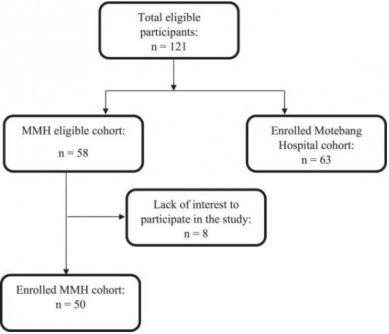
Undernutrition crisis: how Lesotho’s infants are falling behind

Study cohort. MMH, Makoanyane Military Hospital.
FAYETTEVILLE, GA, UNITED STATES, July 24, 2025 /EINPresswire.com/ -- A revealing new study has uncovered a critical public health concern in Lesotho: widespread undernutrition among children aged 6 to 24 months. Researchers found stark disparities in child growth and feeding practices between urban Maseru and rural Leribe, where nearly 37% of infants were stunted.
Undernutrition remains one of the leading threats to child health and development in low-income countries, with Sub-Saharan Africa bearing the brunt of this crisis. In Lesotho, childhood stunting rates have risen dramatically, now affecting over a third of children under five. This silent emergency undermines not only physical growth but also cognitive development and long-term productivity. Feeding practices during the first 1000 days of life are critical—yet most Basotho infants fail to meet minimum standards for dietary diversity. Economic hardship, limited maternal education, and early weaning further compound the risks. Due to these challenges, it is essential to investigate child feeding patterns and growth outcomes through in-depth, district-level research.
In a cross-sectional study (DOI: 10.1002/pdi3.2503) published in Pediatric Discovery (August 2024), researchers from the National University of Lesotho assessed growth and feeding patterns in 113 children aged 6–24 months from Maseru and Leribe. The study offers new insight into how geography, income, and dietary habits shape child development. While urban Maseru showed moderate levels of undernutrition, rural Leribe recorded alarmingly high rates of stunting and limited access to nutritious foods. The research highlights an urgent need for targeted interventions in vulnerable districts to address Lesotho’s ongoing nutrition crisis.
Using WHO-adapted questionnaires and standardized anthropometric measurements, the team surveyed mother–child pairs during clinic visits in Maseru and Leribe. While 95.6% of children had been breastfed at some point, continued breastfeeding was notably lower in Leribe (28.6%) compared to Maseru (54.0%). Complementary foods were introduced before the recommended 6 months, often consisting of maize or sorghum porridge with low nutritional value. In Leribe, 84.1% of children consumed stiff maize porridge daily, yet few received fruits, vegetables, or animal-based proteins. Maseru infants fared better, with higher daily intake of fortified cereals, yoghurt, and formula milk. The growth data revealed severe disparities: stunting affected 36.5% of children in Leribe versus 20.0% in Maseru. Severe stunting was also more prevalent in Leribe (15.9%), reflecting chronic malnutrition. The study also found that nearly 90% of Leribe households earned less than 2000 maloti per month, underscoring the link between poverty and poor nutrition. These findings expose how economic and regional divides profoundly shape early childhood health, with long-lasting consequences.
“Our findings are a wake-up call,” said lead author Mothusi Nyofane of the National University of Lesotho. “Stunting at this scale means we are failing children in their most critical developmental window. Continued breastfeeding and access to a more varied diet are essential, yet too many families lack the resources or knowledge to provide them. This study should prompt immediate policy action to support caregivers—especially in rural districts like Leribe—before these deficits become permanent.”
The study’s implications reach far beyond Lesotho’s borders, highlighting the urgent need for localized, equity-driven nutrition policies in Sub-Saharan Africa. Strengthening maternal and child health services—through education, food support, and breastfeeding advocacy—could dramatically improve early development outcomes. In Leribe, targeted programs to increase access to affordable nutrient-rich foods, such as fortified cereals and dairy, are critical. Longitudinal studies are also needed to monitor growth trajectories and measure the long-term effects of early-life nutrition. With Lesotho aiming to reduce stunting from 33.2% to 23% by 2025, these findings provide a timely evidence base for more strategic, district-focused interventions.
References
DOI
10.1002/pdi3.2503
Original Source URL
https://doi.org/10.1002/pdi3.2503
Lucy Wang
BioDesign Research
email us here
Distribution channels: Science, Technology
Legal Disclaimer:
EIN Presswire provides this news content "as is" without warranty of any kind. We do not accept any responsibility or liability for the accuracy, content, images, videos, licenses, completeness, legality, or reliability of the information contained in this article. If you have any complaints or copyright issues related to this article, kindly contact the author above.
Submit your press release